Let’s face it, you and I like things to be organized. That way, we can find what we’re looking for when we need it and without having to ask anyone if they’ve seen this document or can share that file. What’s in those documents is knowledge. We all agree that knowledge should be discovered, collected, organized, shared, and used by everyone at your organization — like a library, only digital and for your company only. This is what knowledge management, or KM, is all about.
Effective knowledge management is gaining popularity as companies expand, go hybrid or global, and employees turnover at lightning speed. At scale, across your organization, a knowledge management process can be a tricky business. Just think of how much information, links, documents, processes, and reports—knowledge—you’ve personally amassed during your time at work. Then consider your colleagues, both past and present, and remote.
That’s where a good knowledge management process comes in super handy.
What’s A Knowledge Management Process?
In a past post on why KM is critical for remote hires, we defined KM as “the process of capturing, distributing, and effectively using knowledge.” Knowledge is everything from that research project that you conducted to a draft report that I wrote, based on a client interview that I recorded. All of our collective “knowledge” is part of a shared company knowledge base that must be easily accessible to everyone in and working with an organization.
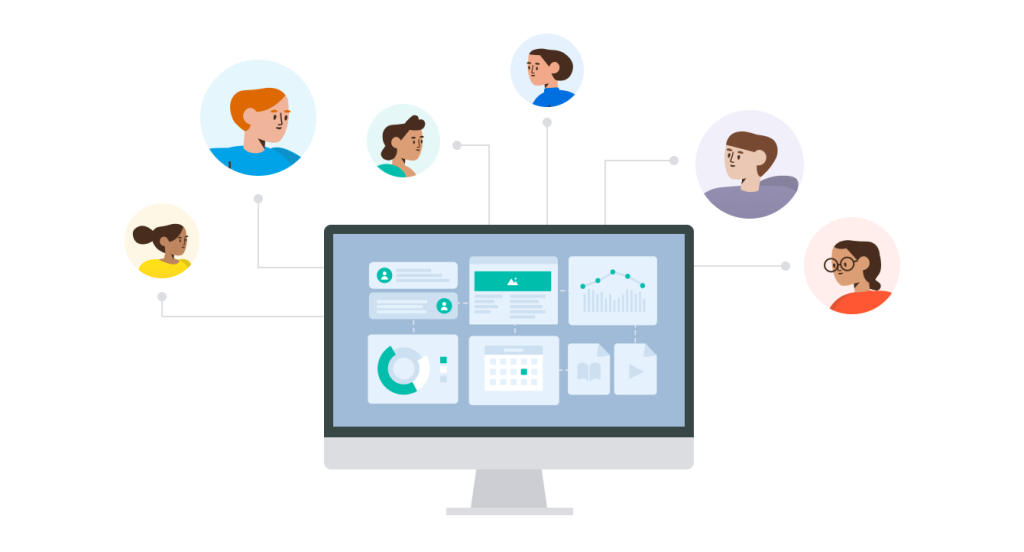
How a company manages its information, including collecting, storing, organizing, securing, sharing, and using it, is all a part of a knowledge management process. When done well, it can connect global and hybrid teams and support better and faster decision-making, work efficiency, and communication. Rather than having to repeat work that a past colleague of mine already did, I can build on their foundational knowledge and innovate and grow from there.
The 4 Stages Of A Knowledge Management Process
In a nutshell, the knowledge management process can be boiled down to four stages: discover, capture, organize, share and use. Let’s walk through each stage together.

1. Discover
Knowledge discovery is the first stage of the KM process. It’s all about discovering or uncovering new knowledge and information. It can be done by either diving deeper into your existing knowledge bases, such as taking a second look at existing data, or by creating new ones. For example, you could collect new or reuse existing data from your users on how their onboarding experience can be improved. The discovery stage is an important part of KM because it supports strategizing and better business decisions that are based on, and supported by, facts.

2. Capture
Think of knowledge capturing as your company’s big information audit. This is the stage where you collect all of your company’s internal and external knowledge. Internally, this means capturing all of your documents, files, processes, links, images, reports, and so on from employees, teams, and leaders across the company. Externally, this may include collecting knowledge from contractors, past employees, customers, external experts, vendors, partners, and often even competitors.

3. Organize
Now that you’ve collected internal and external knowledge, it’s an essential part of the knowledge management process to organize it. Categorize, label, organize, index, classify, color-code, describe it—whatever you need to do to make sense of your knowledge base. This step is important so that teams can easily find, access, use, and share the information. It’s also why so many companies opt for knowledge management systems. By capturing and organizing your company knowledge effectively, you can spot and fill gaps in your knowledge base.

4. Share And Use
Knowledge sharing and use are what allow knowledge to be available and accessible to anyone who needs it. Many believe they are the whole point of knowledge management processes. Why discover new knowledge, collect an exhaustive database of it, and organize it, if it cannot be found, accessed, shared, or used by decision-makers and team members where and when they need it? Knowledge sharing is an essential part of effective team collaboration, communication, and collective growth.
The Importance Of An Effective Knowledge Management Process
Knowledge management author and speaker, Stan Garfield said that “knowledge shared is knowledge squared.” Knowledge management processes can help increase team productivity, collaboration, and communication, thus creating an open and transparent workplace culture. It can streamline onboarding and training while improving remote work processes with easy access to company information. Collecting and organizing disparate company knowledge prevents knowledge loss despite employee turnover. It also allows your team members to build and innovate faster—and therefore grow—on top of foundational knowledge. Effective knowledge management has the power to change organizations for good.
Knowledge shared is knowledge2
How Does Golinks Support The 4 Stages Of Knowledge Management Processes?
GoLinks is a knowledge management platform. GoLinks improves productivity by helping teams find and share information fast with memorable short links called go links. GoLinks is built for sharing knowledge throughout every stage of the process. Let’s take a look at each stage, and how GoLinks supports this.
Discover
GoLinks is built for discovering and quickly sharing knowledge. You can discover this through a variety of ways:
- GoLinks’ dashboard feature allows users to view new go links that are created by the rest of the team.
- GoLinks sends weekly insights emails containing ‘hot & new golinks.’ which allows users to peruse new go links created by other users.
- For those that are more adventurous, they can integrate a chat app like slack and create a #freshgolinks channel which will automatically update the team.
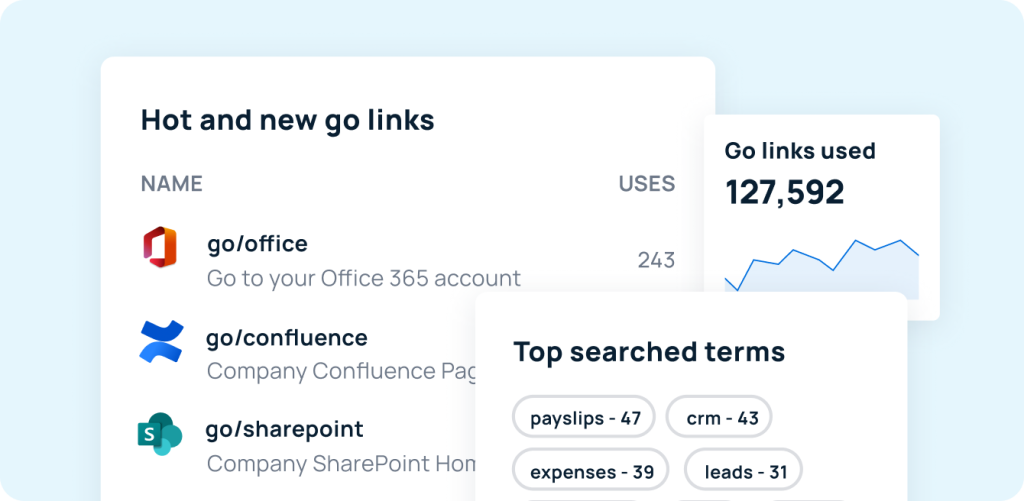
Capture
- Users can quickly capture knowledge with GoLinks’ browser extension. Go links can be created from any webpage using the browser extension.
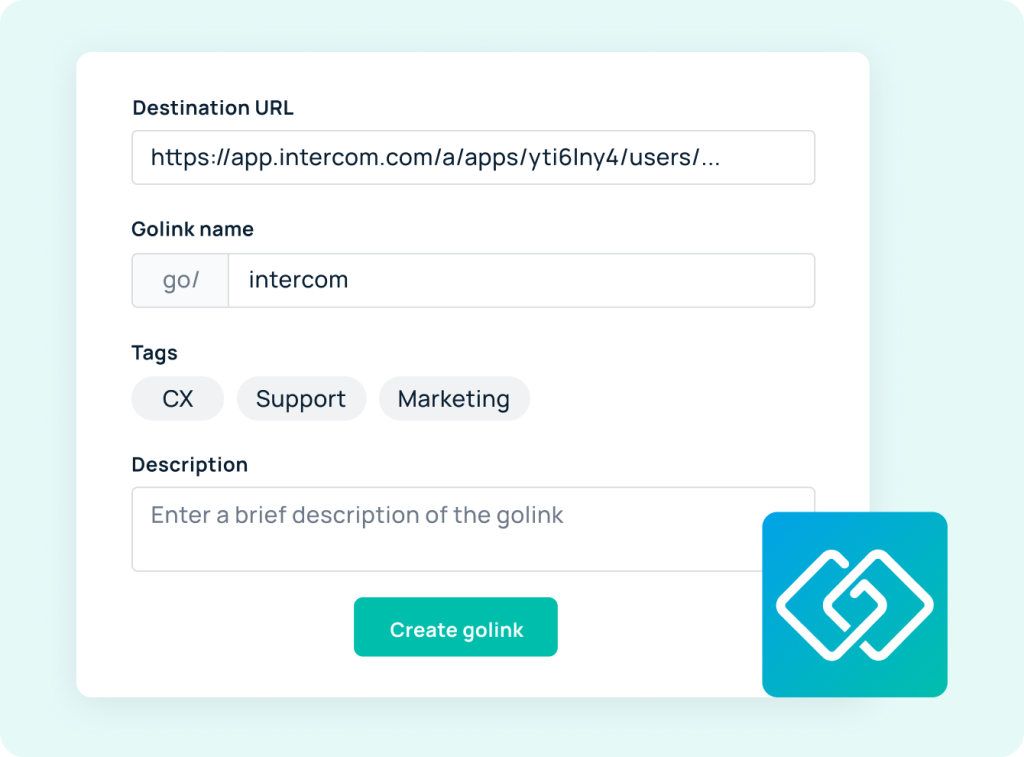
Organize
GoLinks allows for organization on their platform, and can be used to organize other knowledge management systems. Organizing can happen in the following ways:
- Create Naming Parameters: Because GoLinks is designed for easy recall, naming parameters can help users quickly recall the resource they’re looking for. E.g. go/it-support vs go/troubleshooting
- Tagging: Tagging allows you to categorize go links. You can filter or search by tags to find relevant resources.
- Variable go links: Create a go link that will 10x your efficiency. Target Jira various tickets using go/jira followed by the ticket number: go/jira/28, go/jira/52, go/jira/312
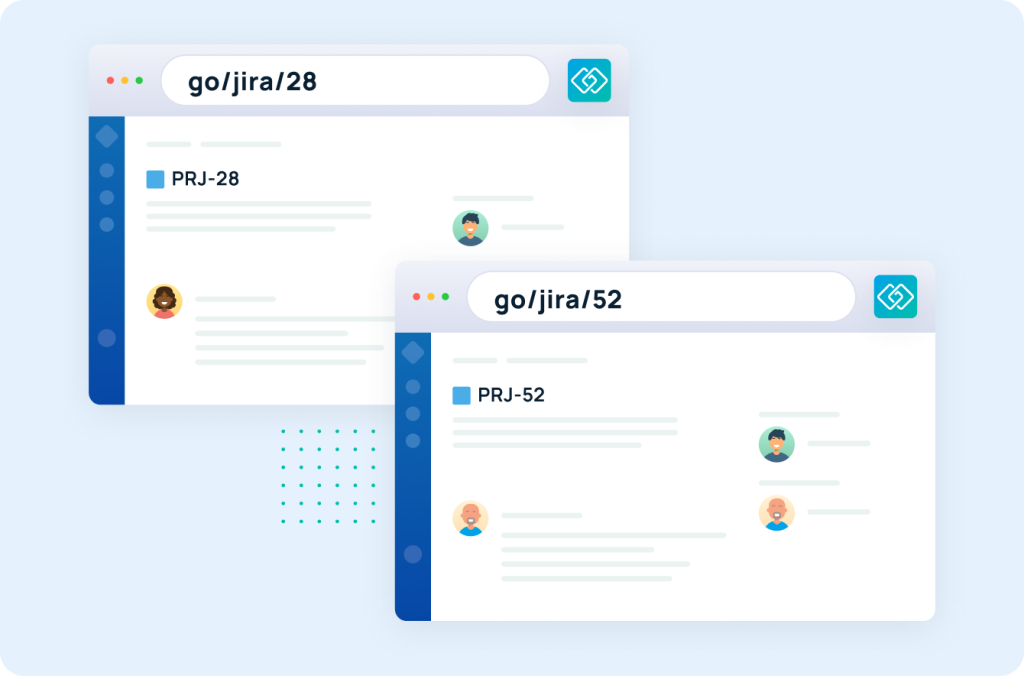
Share and Use
Sharing knowledge with GoLinks is intuitive. With the discovery feature, top assets can be shared quickly in the ways mentioned above. GoLinks can also be shared verbally or visually, making them perfect for live collaboration without the need to context switch. Using GoLinks is easy, you can create a free account today.
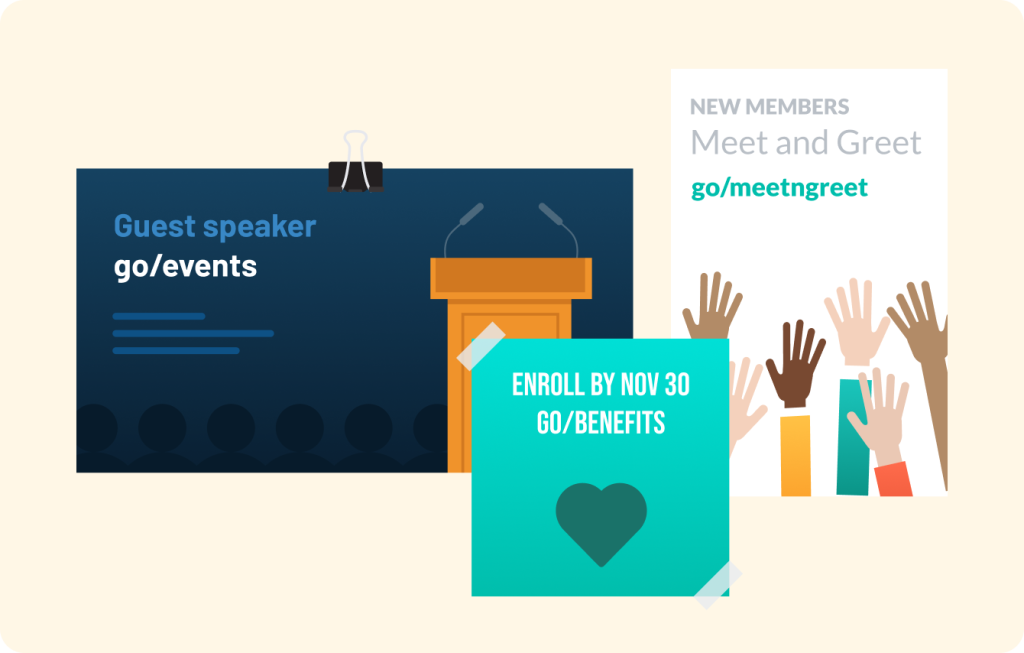
Start knowledge sharing at your company today. Try GoLinks for free.
Access and share resources instantly with GoLinks
Try for free














